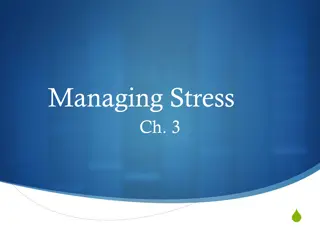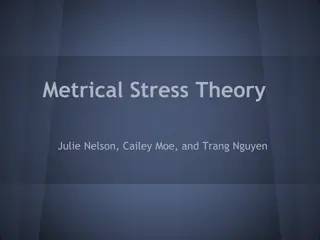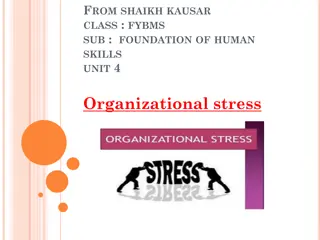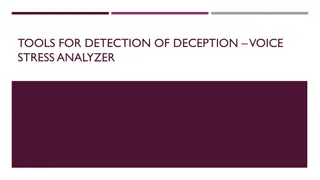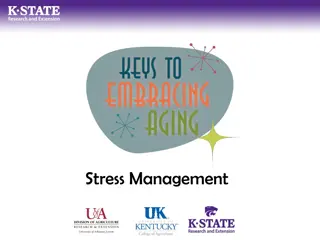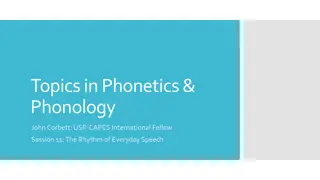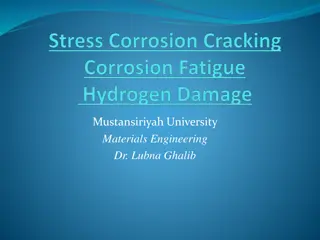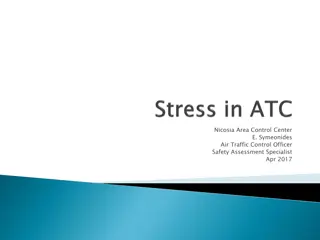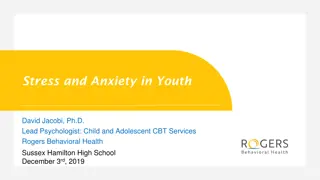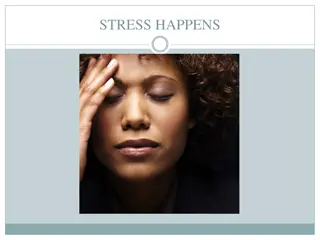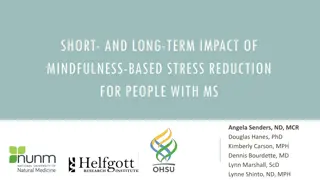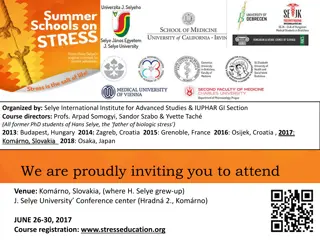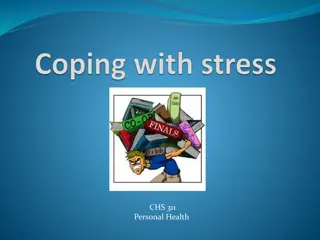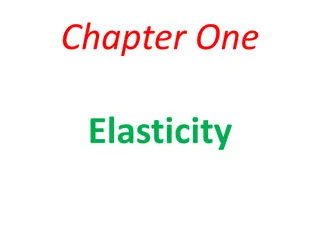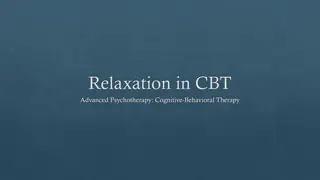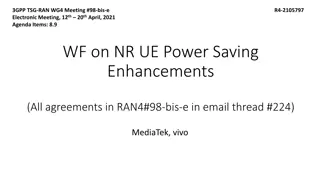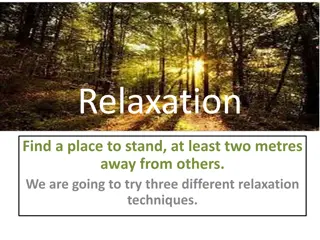Understanding Relaxation and Its Benefits for Stress Reduction
Relaxation is the state of being free from tension and anxiety. To effectively combat stress, activating the body's natural relaxation response is crucial. Techniques like deep breathing, meditation, exercise, and yoga can help reduce everyday stress, improve mental and physical health, and boost energy and mood. The relaxation response, when activated, slows heart rate, deepens breathing, stabilizes blood pressure, relaxes muscles, and increases blood flow to the brain. Regular practice of relaxation can lead to increased focus, energy, and productivity, while combating illness, relieving pain, and enhancing problem-solving abilities. Discover how relaxation helps reduce stress at school, grounds you, aids in gathering thoughts, and relieves pain.
Download Presentation

Please find below an Image/Link to download the presentation.
The content on the website is provided AS IS for your information and personal use only. It may not be sold, licensed, or shared on other websites without obtaining consent from the author. Download presentation by click this link. If you encounter any issues during the download, it is possible that the publisher has removed the file from their server.
E N D
Presentation Transcript
What is Relaxation The state of being free from tension and anxiety.
For many of us, relaxation means zoning out in front of the TV at the end of a stressful day. But this does little to reduce the damaging effects of stress. To effectively combat stress, we need to activate the body s natural relaxation response. You can do this by practicing relaxation techniques such as deep breathing, meditation, rhythmic exercise, and yoga. Fitting these activities into your life can help reduce everyday stress, boost your energy and mood, and improve your mental and physical health
No one can avoid all stress, but you can counteract its detrimental effects by learning how to produce the relaxation response, a state of deep rest that is the polar opposite of the stress response. The relaxation response puts the brakes on stress and brings your body and mind back into a state of equilibrium.
When the relaxation response is activated, your: heart rate slows down breathing becomes slower and deeper blood pressure drops or stabilises muscles relax blood flow to the brain increases
In addition to its calming physical effects, the relaxation response also increases energy and focus, combats illness, relieves aches and pains, heightens problem-solving abilities, and boosts motivation and productivity. Best of all, anyone can reap these benefits with regular practice. And while you may choose to pay for a professional massage or acupuncture session, for example, most relaxation techniques can be done on your own or with the aid of free audio downloads or inexpensive smartphone apps.
Why Relaxation Helps reduce stress at school Grounds you Lets you gather your thoughts in certain situations Helps relieve pain
Deep Breathing Sit comfortably with your back straight. Put one hand on your chest and the other on your stomach. Breathe in through your nose. The hand on your stomach should rise. The hand on your chest should move very little. Exhale through your mouth, pushing out as much air as you can while contracting your abdominal muscles. The hand on your stomach should move in as you exhale, but your other hand should move very little. Continue to breathe in through your nose and out through your mouth. Try to inhale enough so that your lower abdomen rises and falls. Count slowly as you exhale. If you find it difficult breathing from your abdomen while sitting up, try lying down. Put a small book on your stomach, and breathe so that the book rises as you inhale and falls as you exhale.
Body Scan When/where can you do this Why? Helps with sleep Sleep management Relax after a stressful day
Body Scan Sequence: Right foot, then left foot Right calf, then left calf Right thigh, then left thigh Hips and buttocks Stomach Chest Back Right arm and hand, then left arm and hand Neck and shoulders Face
Feel it Find something to touch. A coin, pencil case or a pen. Take a big deep breath in and slowly breathe out. As you do this exercise breathe slowly. Use this object and look closely at it. The colour, shape, size of the object. Touch the object, feel it, the size, texture is it shiny, soft, cold, hot. Take a few minutes to study it. By the end you should feel more relaxed and able to focus more and your mind hasn t wondered on to other things.
Square breathing Find any rectangle or square anywhere in the room. Follow the lines of the object breathing in for 3 seconds, holding for 3 seconds, breathing out for 3 seconds and holding for 3 seconds Practise. No one needs to know. You can do this sat at your desk just taking a few minutes to clear your head before you carry on.
Visualisation Visualisation, or guided imagery, is a variation on traditional meditation that involves imagining a scene in which you feel at peace, free to let go of all tension and anxiety. Choose whatever setting is most calming to you, whether its a tropical beach, a favourite childhood spot, or a quiet wooded glen. You can practice visualisation on your own or with a therapist (or an app or audio download of a therapist) guiding you through the imagery. You can also choose to do your visualisation in silence or use listening aids, such as soothing music or a sound machine or a recording that matches your chosen setting: the sound of ocean waves if you ve chosen a beach, for example.
For example, if you are thinking about a dock on a quiet lake: See the sun setting over the water Hear the birds singing Smell the pine trees Feel the cool water on your bare feet Taste the fresh, clean air Enjoy the feeling of your worries drifting away as you slowly explore your restful place.
Learning the basics of these relaxation techniques isnt difficult, but it takes regular practice to truly harness their stress-relieving power. Most stress experts recommend setting aside at least 10 to 20 minutes a day for your relaxation practice. If you d like to maximize the benefits, aim for 30 minutes to an hour.
Online apps/Signposting Mind Head Space Calm Pacifica My Mood Tracker Young Minds




